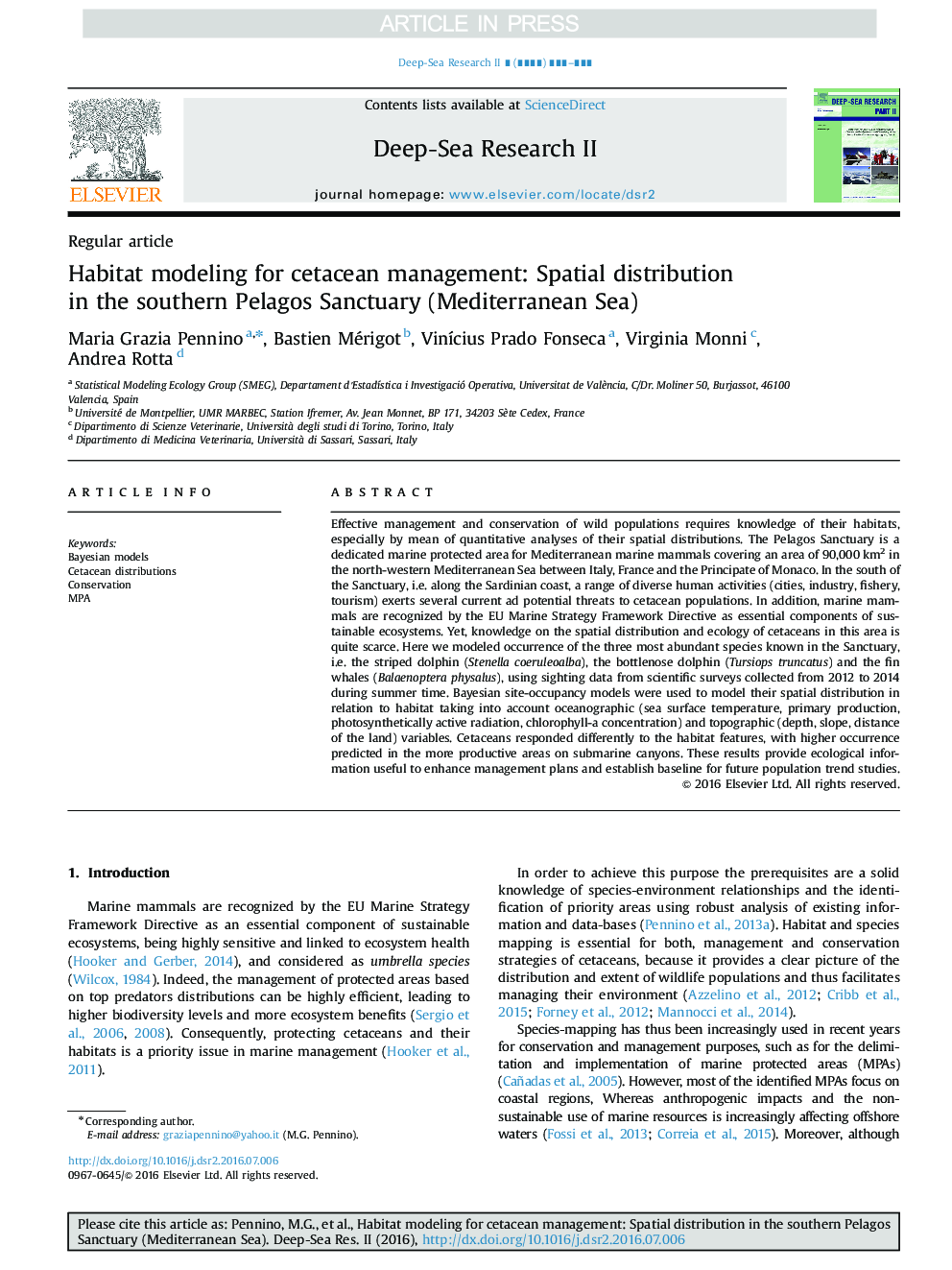| Article ID | Journal | Published Year | Pages | File Type |
|---|---|---|---|---|
| 5764932 | Deep Sea Research Part II: Topical Studies in Oceanography | 2017 | 9 Pages |
Abstract
Effective management and conservation of wild populations requires knowledge of their habitats, especially by mean of quantitative analyses of their spatial distributions. The Pelagos Sanctuary is a dedicated marine protected area for Mediterranean marine mammals covering an area of 90,000Â km2 in the north-western Mediterranean Sea between Italy, France and the Principate of Monaco. In the south of the Sanctuary, i.e. along the Sardinian coast, a range of diverse human activities (cities, industry, fishery, tourism) exerts several current ad potential threats to cetacean populations. In addition, marine mammals are recognized by the EU Marine Strategy Framework Directive as essential components of sustainable ecosystems. Yet, knowledge on the spatial distribution and ecology of cetaceans in this area is quite scarce. Here we modeled occurrence of the three most abundant species known in the Sanctuary, i.e. the striped dolphin (Stenella coeruleoalba), the bottlenose dolphin (Tursiops truncatus) and the fin whales (Balaenoptera physalus), using sighting data from scientific surveys collected from 2012 to 2014 during summer time. Bayesian site-occupancy models were used to model their spatial distribution in relation to habitat taking into account oceanographic (sea surface temperature, primary production, photosynthetically active radiation, chlorophyll-a concentration) and topographic (depth, slope, distance of the land) variables. Cetaceans responded differently to the habitat features, with higher occurrence predicted in the more productive areas on submarine canyons. These results provide ecological information useful to enhance management plans and establish baseline for future population trend studies.
Keywords
Related Topics
Physical Sciences and Engineering
Earth and Planetary Sciences
Geology
Authors
Maria Grazia Pennino, Bastien Mérigot, VinÃcius Prado Fonseca, Virginia Monni, Andrea Rotta,
